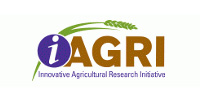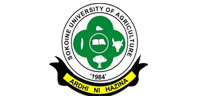Glossary
A
-
Access control
Access to subscription based journals is often controlled based on IP numbers, alternatively on user name and password.
-
Acquisition
Acquisitions involves the process of budgeting, ordering, receiving, and processing materials for the library collection. Acquisitions is defined as the “the process of selecting, ordering, and receiving materials for library or archival collections by purchase, exchange, or gift, which may include budgeting and negotiating with outside agencies, such as publishers, dealers, and vendors, to obtain resources to meet the needs of the institution’s clientele in the most economical and efficient way”.
B
-
Big deal
The Big Deal is a business practice of many large commercial publishers that entails offering universities access to a large group of journal titles at a discounted price. In the Big Deal, libraries agree to buy electronic access to all of a commercial publisher’s journals for a price based on current payments to that publisher, plus some increment. Under the terms of the contract, annual price increases are capped for a number of years. The Big Deal can lower the average cost of access per journal, but reduces library control over collections and increases publishers’ market power over libraries.
C
-
Concurrent users
For some resources there can be a limited number of users who can access the resource simultaneously.
-
Copyright
In general, copyright is a form of legal protection given to content creators through the assignment of specific rights to works that qualify for protection. [http://www.copyright.com/content/cc3/en/toolbar/education/get-the-facts/purpose_of_copyright.html]
-
COUNTER
COUNTER (Counting Online Usage of Networked Electronic Resources) is an initiative designed to improve the reliability of online usage statistics. The role of COUNTER is to ensure that usage statistics are credible, compatible and consistent. For further information see http://www.projectcounter.org
-
Course pack
A collection of articles from journals or books selected by a teacher as required or supplemental reading for students.
D
-
Discovery system
A system through which the library can present all content recommended and available – all through one interface.
-
Document delivery
A service where libraries will supply copies of articles/documents to other libraries.
-
DOI
Digital object identifier, a unique string of characters used to identify digital information.
E
-
Encrypted
Information or data converted into a code, usually to prevent unauthorized access.
-
ERM
Service/tool used by libraries to administer and keep track of information electronic resources.
F
-
Federated search
Federated search is a technology that allows the simultaneous search of multiple searchable resources. Also known as parallel search, metasearch, or broadcast search, federated searching aggregates multiple channels of information into a single searchable point. In libraries, Federated search technologies can blend e-journals, subscription databases, electronic print collections, other digital repositories, and the Internet. A benefit of federated searching is that it reduces the time it takes to search for information across a wide variety of resources, and usually displays results in a common format.
Federated search tools feed the user’s search terms into a set of databases, and often a library catalogue. The engine makes single query requests that are distributed to each separate data source. The databases and catalogue then return their results to the search tool. It compiles them and offers them to the user The search then aggregates the results received from the engines, sorts them according to predefined criteria (e.g. relevancy), and presents them to the user. Because federated search systems search multiple databases, compile and then order results, they tend to present results slower than some discovery systems.
H
-
Harvesting
In the OAI context, harvesting refers specifically to the gathering together of metadata from a number of distributed repositories into a combined data store. [https://www.oaforum.org/tutorial/english/page6.htm#section16]
-
html
Hypertext Markup Language is the standard “programming language” used to create web pages.
I
-
Interlibrary loan
A service where libraries will lend resources from one library to another.
-
IP number
Internet protocol number assigned to computers, printers etc. In computer networks that are using the internet protocol.
-
ISSN
The International Standard Serial Number (ISSN) is a unique and internationally accepted eight-digit number that is used to identify the title of a periodical.
K
-
KBART
Knowledge Bases and Related Tools, a standard that can be used to help define the structure of the metadata when transferred from content providers to discovery services.
L
-
License
An agreement negotiated by the parties involved. Once the parties have agreed to terms, the license is a legal and binding contract between them. A contract is “[A]n agreement between two or more parties creating obligations that are enforceable or otherwise recognizable at law.” [Black’s Law Dictionary, 7th edition, 1999.]
-
Link resolver
Software that converts a logical address or meta-data into the physical URL of the target data. [http://www.pcmag.com/encyclopedia/term/58073/link-resolver]
M
-
MARC
“MARC” “MAchine-Readable Cataloging”, it is a dataformat used to describe bibliographic records in the library. It is also the format used to transmit information between library systems. The current version of the library standard is MARC 21 but there are many variations, the most common one is called UNIMARC.
-
MARCXML
MARCXML was developed by the Library of Congress as a schema to represent the Marc records in XML. It is usually used in library web services.
O
-
OAI-PMH
A standard used to facilitate the transfer from content providers to discovery service providers. In addition to these protocols, these transfers also take place through file transfers, web harvesting, or other mechanisms agreed upon by the respective organizations involved. [http://www.niso.org/apps/group_public/download.php/14487/future_library_resource_discovery.pdf]
-
OPAC
An online public access catalog (OPAC) is an online database of materials held by a library or group of libraries. Users search a library catalog principally to locate books and other material available at a library.
-
Open access
Budapest Open Access Initiative: The literature that should be freely accessible online is that which scholars give to the world without expectation of payment. Primarily, this category encompasses their peer-reviewed journal articles, but it also includes any unreviewed preprints that they might wish to put online for comment or to alert colleagues to important research findings. There are many degrees and kinds of wider and easier access to this literature. By “open access” to this literature, we mean its free availability on the public internet, permitting any users to read, download, copy, distribute, print, search, or link to the full texts of these articles, crawl them for indexing, pass them as data to software, or use them for any other lawful purpose, without financial, legal, or technical barriers other than those inseparable from gaining access to the internet itself. The only constraint on reproduction and distribution, and the only role for copyright in this domain, should be to give authors control over the integrity of their work and the right to be properly acknowledged and cited. [http://www.budapestopenaccessinitiative.org/read]
-
Open URL
A URL that refers to an article, book or other resource rather than the physical location of the item on the Web. Developed for use in libraries and other repositories of information, the OpenURL contains the address of an OpenURL Web site combined with the item’s identification. The OpenURL Web site serves as a resolver and finds the physical address of the item. Developed by the National Information Standards Organization (NISO), it was turned over to the Online Computer Library Center (OCLC), Dublin, OH (www.oclc.org) in 2006. [http://www.pcmag.com/encyclopedia/term/58119/openurl]
P
-
Perpetual access
The term used to describe the ability to retain access to electronic journals after the license agreement for these materials has ended.
R
-
Repository
In OAI-PMH a repository is a network accessible server that is able to process OAI-PMH requests correctly. [https://www.oaforum.org/tutorial/english/page6.htm#section26]
S
-
Subscription agent
Subscription agents is an intermediaries between the library and the publishers of journals. The agent take care of everything from checking the subscription price, placing the order over invoicing to currency exchange and claiming missing issues.
-
SUSHI
SUSHI (Standardized Usage Statistics Harvesting Initiative) is an initiative designed to improve the usability of online usage statistics. The role of SUSHI is to ensure that they are easy to obtain. SUSHI defines an automated request and response model for the harvesting of electronic resource usage data utilizing a Web services framework. It is intended to replace the time-consuming user-mediated collection of usage data reports. SUSHI is sponsored by NISO (the National Information Standards Organization).
U
-
utf8
U from Universal Character Set and Transformation Format—8-bit (UTF-8) is a character encoding which can encoding all possible characters (called code points) in Unicode. The encoding is variable-length and uses 8-bit code units.
X
-
XML
XML is a language for creating other languages. It defines a means of describing data. XML can be validated against a DTD or schema setting out the elements of the language created. XML mappings exist for a number of metadata record formats. [https://www.oaforum.org/tutorial/english/page6.htm#section32]




